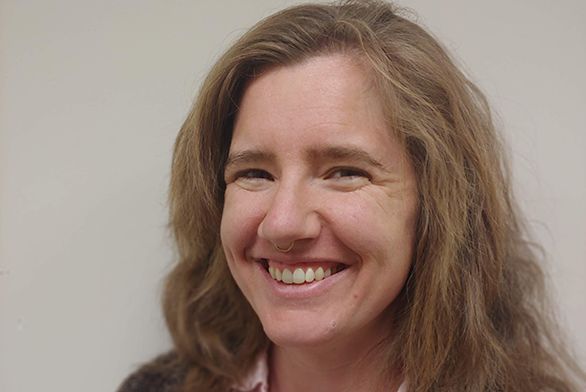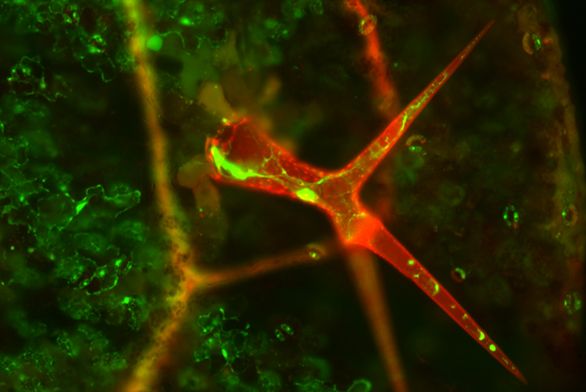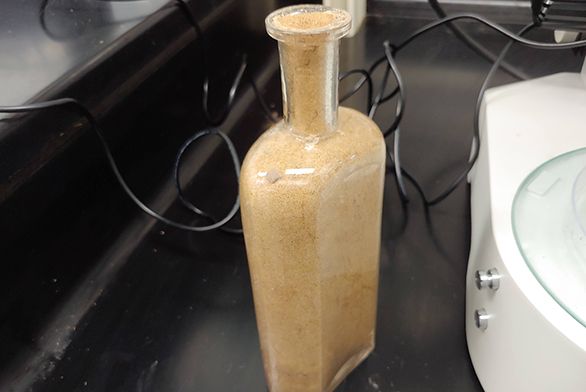Johnnie Uncovers the Mysteries of Plant Life with Beal Seed Experiment
June 7, 2021 | By Les Poling

Every 20 years, a group of scientists gathers in the wee hours of the morning, rendezvous at a secret location on the Michigan State University campus, and digs up seeds that were originally buried 142 years ago. The Beal seed viability experiment—described by the New York Times as “a multicentury attempt to figure out how long seeds can lie dormant in the soil without losing their ability to germinate”—is one of the longest-running experiments in the world. And for Michigan State postdoctoral researcher Margaret Fleming (A04), a Johnnie alum working on the experiment, it’s also one of the most fascinating.
“We don’t know if the seeds will germinate when we dig them up,” she says. “That uncertainty about it—it’s magical.”
Fleming didn’t originally dream of a career as a plant biologist. After graduating from St. John’s, she attended Penland School of Craft to learn weaving, which she calls an “amazing” experience. Following that, she dabbled in art conservation, taking classes at Montgomery College and landing an internship at the National Gallery of Art—which included the less-than-exciting task of helping preserve a large donation of acrylic paints. While she understood the usefulness of her work, there was no creativity involved; more the opposite.
“I was literally watching paint dry,” she recalls.
Then, while riding her bike to work one day, it hit her like a ray of sunlight. What she cared about was photosynthesis.
“I love photosynthesis,” she remembers thinking. “I was fascinated by it and how it keeps us alive. So I applied to a single graduate school, Colorado State University, and started from there.”
Given that she graduated with a liberal arts degree and not a biology major, Fleming really did start from the beginning: using a pipette for the first time, discovering the terminology and nomenclature of the field, and more. But she loved learning, from the big ideas to the foundational tools. She graduated from Colorado State with her PhD in 2015.
Ultimately, Fleming says, she didn’t end up doing much related to photosynthesis. However, in the general field of plant and molecular biology, she’s discovered a realm of infinite possibility, conducting research into questions, like, for example: how does life work? Fleming describes a feeling of exhilaration watching the building blocks of existence form on a microscopic level.

“You do things like take an invisibly small amount of colorless liquid, and mix it with another equally small, equally colorless liquid. If you know what you’re doing, you can create a plant that glows green and red,” she says. “The power is incredible.”
That fascination dovetails neatly with Fleming’s background in seed research. In the time between graduating from Colorado State and beginning at Michigan State, she held a postdoctoral position at the USDA’s National Laboratory for Genetic Resource Preservation (NLGRP)—which, among other things, includes a seed lab. At NGLRP, Fleming studied seed longevity, looking into how stored seeds’ RNA— the part of the cell responsible for converting the information stored in DNA into proteins—is affected by time.
The experience would come in handy. When Fleming arrived at Michigan State to begin postdoctoral research, her advisor, Marjorie Weber, asked if she’d like to come on board the Beal seed experiment. “And I said ‘absolutely, yes,’” Fleming recalls.
To an outsider, it can be hard to decipher the hype around the Beal experiment. A scientist buried seeds 140 years ago, now present-day scientists dig them up to see what changed. Nothing special. But the reality is much more mind-blowing, Fleming says. For one, these are the oldest existing seeds in the country, giving scientists an exceptionally rare opportunity to examine how 142-year-old seeds work. Even more exciting? “The seeds are still alive.”
In other words, there are new seedlings in the growth chamber that relate directly to a biological process that began nearly one and a half centuries ago. From seeds buried in the late 1800s, Fleming explains, there have emerged “fresh cells, with fresh DNA and nuclei—all their pieces are brand new, pulled out of the air.”

Findings from the Beal experiment can help scientists further expand their knowledge of how the biological mechanisms of our world work—and have worked throughout the Millenia. They also have potential grounded in everyday reality. As the Times notes, “Lessons from their work could help with everything from restoring damaged ecosystems to storing crop seeds for the long-term.” The Beal experiment, it turns out, could have a real, lasting impact on humanity’s future.
Of course, the Beal seeds comprise a relatively small amount of Fleming’s work. She concerns herself mostly with examining grape leaves, trying to figure out the genes that control small structures called domatia that form on the leaves’ undersides. Where veins intersect on the leaf’s underside, tufts of hair will form where mites live, protecting the leaf from damage. “It’s a completely different project, but it still involves extracting and analyzing RNA,” she says.
In the future, she hopes to become a biology professor at Michigan State, ideally studying seed biology. If she gets the position, it’ll be quite an academic journey for someone who wasn’t particularly interested in biology during undergrad. But Fleming is quick to point out that current Johnnies should have the same confidence in their ability to follow their interests—regardless of the words on their diploma. When she first started at grad school, she says, she didn’t even know the central dogma: DNA encodes RNA, which encodes protein. And now here she is, working on one of the most prominent seed experiments in the world.
In other words, for Johnnies looking to follow in Fleming’s footsteps: “If you want to do it, you can do it.”

